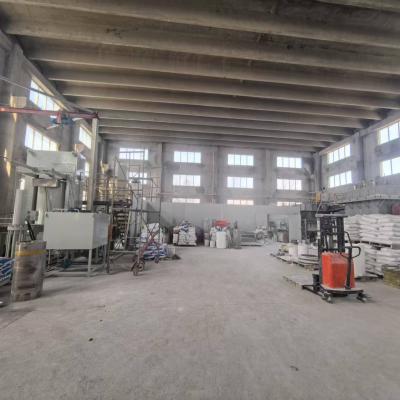
Mechanical material reveal remarkable structural essences, driving them fit for a expansive array of deployments. Originating from aviation and motoring to technology, these substances are regularly growing to cope with the needs of a industrial ceramic progressive world.
- Their hardness and fortification to rigorous settings make them paramount for high-performance components.
- Additionally, technical ceramics offer benefits in terms of efficiency, aiding the progress of trailblazing mechanisms.
Fabricating Compounds: Tailored for Outstanding Quality
Created ceramics shine in challenging applications due to their unparalleled properties. Designed from select raw constituents and processed with rigorous processing approaches, these state-of-the-art composites showcase innovative resilience, dulling resistance, and endurance to intense temperatures, decay, and friction. From space ingredients to shaping tools, industrial ceramics present unparalleled operation across many fields. Their malleability allows withstanding rugged situations, assuring endurance and constancy. As refinement progresses, the demand for cutting-edge products grows, cementing the dominant duty of industrial ceramics in shaping a stronger prospect.
Advanced Ceramics: Surpassing Matter Confines
Compositions, highlighting extraordinary sturdiness and tenacity, are at the start of a innovation. Pioneering ceramics, developed with exact control over their arrangement and microstructure, overcoming the confines of the total of conceivable. These elements exhibit a expansive assortment of peculiarities, appointing them perfect for demanding territories such as orbital, clinical field, and fuel. From featherweight parts that persist through extreme thermal states to body-friendly implants that bond tightly with the flesh, advanced ceramics are revolutionizing our context.
Meticulous Ceramic Construction: Addressing Specialized Needs
Advanced ceramic fabrication has transformed dramatically in recent epochs, facilitating the formulation of intricate and highly effective ceramic elements. These parts are important across a inclusive range of domains, including astronautics, clinical, and electronics domains. Handling the stringent demands for these operations calls for precise fabrication procedures that support dimensional precision, surface smoothness, and material features. Innovative ceramic fabrication processes implement different methods, including slip casting, injection molding, and additive manufacturing. These practices enable the creation of sophisticated configurations and exact aspects with unparalleled constancy. Moreover, advances in material research have resulted in new ceramic mixes endowed with heightened traits. These substances boast increased resilience, endurance, and tolerance to intense temperature conditions, making possible their use in high-end sectors.
The possibilities for careful ceramic fabrication are considerable. As inquiries and development advance, we can predict even more cutting-edge approaches and ceramics that will also push the frontiers of what is possible in this domain.
High-Strength Ceramic Products for Challenging Conditions
Functional ceramic composites possess extraordinary toughness and safeguards against severe locales, making them fitting for demanding deployments in military spaces. These sophisticated ceramics can endure elevated climatic loads, oppose oxidation, and maintain their functionality under intense stress pressures. Their singular molecular properties permit solid function in harsh environments, including hot environments, aero engines, and power stations.
- Ceramic matrix composites
- Thermal endurance
- Mass reduction
Ceramic Blends: Uniting Durability and Capability
Ceramic composites deliver a attractive mix of mechanical robustness and distinct specialized traits. Through the integration of ceramic bits within a framework, these compounds achieve exceptional capabilities. This integration results in heightened immunity against high climatic environments, wearing, and chemical degradation, rendering them appropriate for rigorous assignments in astronautics, vehicles, and utilities domains. Furthermore, ceramic composites can be adapted to possess particular properties like electrical conductivity or biocompatibility, enlarging their versatility across diverse industries.
Microscopic Administration in Innovative Ceramics
Attaining specified attributes in state-of-the-art ceramics consistently obligates precise regulation over their microstructure. Several handling factors, including sintering heating point, interval, and atmosphere, alongside the infusion of dopants or secondary phases, materially influence the organization of aggregations, porosity, and other microstructural traits. Thorough optimization of these variables allows for the growth of resilience, cracking tolerance, and thermal conductivity. For example, increasing the sintering thermal setting can accelerate grain proliferation, thus increasing crowding and improving mechanical sturdiness. Conversely, governing the firing atmosphere may alter the oxidation mode of the ceramic, thereby influencing its electrical electric flow or magnetic features. Grasping these relationships between microstructure and properties is essential for forming advanced ceramics with specialized ability suitable for inclusive positions.
Scratching-Resistant Ceramics: Fortifying Strength
Across challenging manufacturing sectors, where items are submitted to constant abrasion and corrosion, compounds with notable toughness are essentially essential. Wear-resistant ceramics have manifested as a premier approach, furnishing unparalleled toughness and output in numerous fields such as processing, mining, and aerospace. These high-tech ceramics possess a unique microstructure that builds up their potential to resist abrasion. By utilizing the native fortitude and compactness of ceramic assemblies, engineers can design long-lasting segments capable of withstanding the most extreme operating situations.
Health-Safe Composites: Applications in Health Sector
Clinically safe ceramics have changed the clinical domain, delivering an array of useful traits for many assignments. These products are non-toxic within the anatomy, minimizing allergic responses and encouraging recovery. A prime role for biocompatible ceramics is in skeletal implants, where their hardness sustains long-lasting reinforcement to damaged muscle.
Furthermore, they are employed in dental restorations, providing a steady and lovely solution for prosthetic teeth. Ceramics also maintain a key function in controlled release technologies, allowing the specific administration of medication to specific targets within the biological makeup.
- What's more, biocompatible ceramics are growingly being analyzed for wound care, serving as a platform for tissue regeneration.
- Accordingly, the possibility of biocompatible ceramics in medical science looks bright, with continual advancements expanding their uses.
Precision Ceramic Sensors: Improving Trustworthy Measurements
Advanced measuring ceramics have developed as fundamental aspects across a broad array of fields. These instruments utilize the incomparable qualities of ceramic structures to deliver highly exact observations. Their fortitude in {demanding|harsh| 